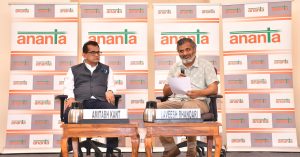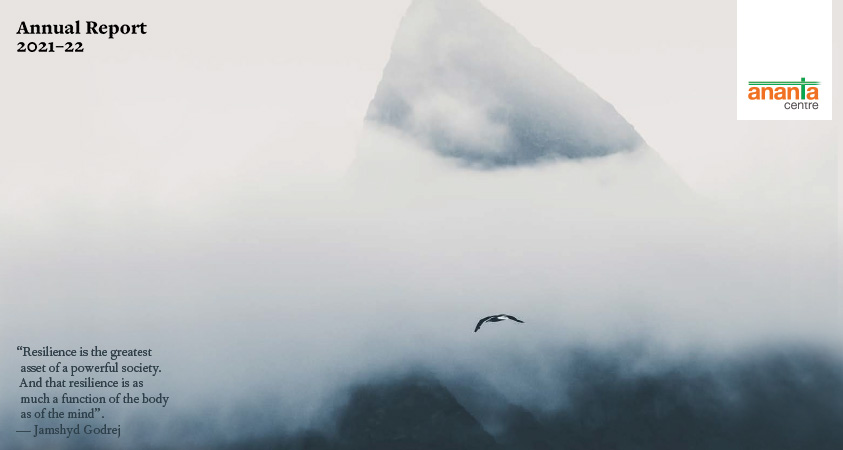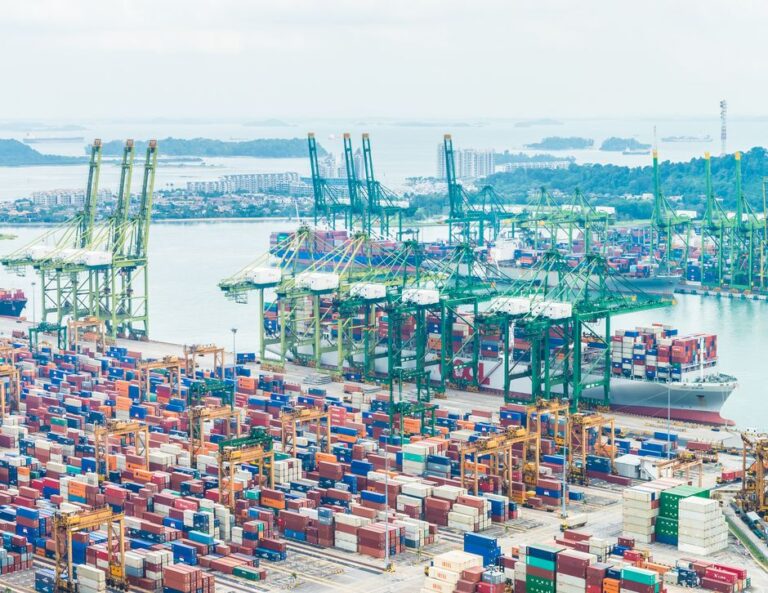RBI windfall for Govt: Wait for the July Budget
An unexpected decision by the central board of the Reserve Bank of India on May 22 has dramatically improved the state of the Union government’s finances. The RBI board decided to transfer a record surplus of Rs 2.11 lakh crore to the Union government for 2023-24. For 2022-23, the RBI had transferred a surplus or dividend of Rs 87,416 crore to the Centre and this money was part of the Union government’s Budget for 2023-24. The dividend and surplus of Rs 2.11 lakh crore would add to the Centre’s receipts budget for 2024-25. The higher dividend was announced largely because the RBI earned substantially higher income from its foreign exchange assets, mostly parked in the US treasury bonds, whose interest rates have risen, and the income it earned from its domestic sale of dollar for market intervention purposes. The fact is that it could have transferred even a higher amount by way of dividend or surplus to the Centre, if it had stuck to the lower range in the formula for maintaining its contingent risk buffer. The new Economic Capital Framework, followed by the RBI from 2018-19, stipulated that the RBI’s contingent risk buffer should range between 5.5 per cent and 6.5 per cent of its balance sheet. In 2022-23, it had raised the contingent risk buffer from 5.5 per cent to 6 per cent of its balance sheet to support growth and overall economic activity in the aftermath of Covid. But in 2023-24, the central board of the RBI decided to increase the risk buffer to 6.5 per cent as “the economy remains robust and resilient”. In the interim Budget, presented to Parliament for 2024-25, the Centre had budgeted a surplus of Rs 80,000-90,000 crore from the RBI. In other words, the Centre now has an additional cushion of Rs 1.2 lakh crore or about 0.37 per cent of gross domestic product (GDP). The big question now is how the Centre will use the extra money it has received from the RBI: Will it use the extra resources to reduce its fiscal deficit from the projected 5.1 per cent of GDP or to boost its capital expenditure? The answer will be available before the middle of July, when the full Budget for 2024-25 is presented by the newly elected government. Meanwhile, the Indian stock market celebrated the RBI decision as Sensex, a benchmark index, surged by 1,197 points or 1.61 per cent on May 23.
Banks spooked by provisioning norms on project financing
A new norm, proposed by the Reserve Bank of India (RBI) on provisioning for project finances, triggered uncertainty among commercial banks, which feared that their business will be seriously affected. The draft norms were issued in early Mary under the “Prudential Framework for Income Recognition, Asset Classification and Provisioning Pertaining to Advances – Projects under Implementation”. Essentially, the proposed norms stipulated that the standard asset provisions for existing and new project loans would be raised from 0.4 per cent to 5 per cent. The banks were apprehensive. They feared that an increase of this proportion in one go would push the financing cost of projects and render them even unviable. The increased provisioning norms appeared to be an offshoot of the RBI’s concern that project loans in the past had contributed to the sharp and rapid deterioration in the banking sector’s non-performing assets (NPA) or loans. The banking sector’s gross NPAs rose to 11.8 per cent of its gross advances by March 2018, largely because of many infrastructure loans turning bad. The gross NPAs came down to 3.2 per cent by September 2023. However, the RBI, having been once bitten, appeared to be twice shy. Rating agencies understood the logic of the RBI proposal. They believed that there would be short-term pain for the banks, with the cost of project finance going up, but in the medium to long term, such prudential measures would prevent any downside to the banking sector’s financial health. On their part, banks appealed to the RBI urging a graded and differential approach to the imposition of higher provisioning norms for project finance. For instance, there was a suggestion that the provisioning norms could go up from 0.4 per cent to 1 per cent for loans for projects implemented by state-owned entities enjoying sovereign backing. For other cases, the provisioning could be 2 per cent. And for projects that suffered delays, the norms could be increased beyond 2 per cent. The total non-food credit at the end of March 2024 was estimated at Rs 164 lakh crore, while gross bank credit to medium and large industries was estimated Rs 29.5 lakh crore. The question of increased provisioning norms for project finance is still being debated, with the finance ministry deciding to have consultation with banks and the RBI.
RBI report rules out early interest rate cut
A report from the Reserve Bank of India provided a better understanding of the inflation outlook for 2024-25 and 2025-26. Authored by the central bank staff, the report noted that a durable alignment with the headline retail inflation target of 4 per cent could take place only from the second half of the current financial year. This trend could sustain during the course of 2025-26 when the retail inflation rate could be seen closer to the government-mandated target of 4 per cent. Experts have read this statement from RBI economists as a signal that the hopes of an early reduction in the repo rate (at which banks can borrow from the central bank against securities) have been substantially reduced. Even though the retail inflation rate could fall in July and August, largely because of the base effect (in 2023, retail inflation was elevated in these months), but this trend was likely to reverse by September 2024, the report noted. The official forecast of RBI on retail inflation is: 4.5 per cent for the whole of 2024-25, with quarterly rates being 4.9 per cent in the April-June quarter, 3.8 per cent in the July-September quarter, 4.6 per cent in the October-December quarter and 4.5 per cent in the final quarter of January-March. The next review of the monetary policy by the RBI Monetary Policy Committee will be crucial. To be held from June 5 to 7, 2024, it would also be the first after the general election results, paving the way for the formation of the next government.
Worrying decline in net FDI while outward remittances spike
The May Bulletin of the Reserve Bank of India shed more light on the state of India’s external sector. While foreign trade data revealed weaknesses in exports of both merchandise goods and services, the RBI Bulletin revealed data on India’s foreign direct investment or FDI. While gross FDI inflows into India were reported at $70.9 billion in 2023-24, only marginally lower than $71.3 billion in 2022-23, a significant deviation took place in the area of net FDI flows. The last financial year saw India’s net FDI flows decline by 62 per cent to $10.6 billion. The sharp fall was on account of a huge increase – about 51 per cent – in repatriation and disinvestment by existing foreign investors in 2023-24. Against $29.35 billion in 2022-23, repatriation and disinvestment by existing foreign investors rose to $44.4 billion in 2023-24. There was also a marginal increase in outward FDI by India from $14 billion in 2022-23 to $15.96 billion in 2023-24. That was how India’s net FDI inflows came down to as low a figure as $10.6 billion. The worrying trend is that repatriation and disinvestment have been steadily rising in the last ten years – accounting for about 15 per cent of gross FDI inflows in 2013-14 to over 62 per cent in 2023-24. Clearly, a deeper understanding of why India’s foreign investors are repatriating more through dividends or disinvesting through their share sales is needed to fix any problems that might affect the flow of net FDI into the country. Equally significant was the data point from the RBI Bulletin, which revealed that Indians were remitting more foreign exchange abroad through the Liberalised Remittance Scheme (LRS) – from $27.14 billion in 2022-23 to $31.73 billion in 2023-24, a rise of about 17 per cent. On the other hand, the interest of non-resident Indians in parking their money in deposits in India continued to grow – with total NRI deposits in India growing by 63.5 per cent from $8.98 billion in 2022-23 to $14.7 billion in 2023-24. Similarly, net portfolio investment in India from abroad rose to $42.22 billion in 2023-24, against an outflow of portfolio investment from the country at $5.15 billion.
Govt report bullish on growth and overall economy
The latest monthly report on the Indian economy, produced by the Union finance ministry, indicated a mixed outlook. The momentum of growth witnessed in 2023-24 was expected to continue in 2024-25, according to the report. The bright outlook was premised on the “robust trends in important high-frequency indicators of growth like the goods and services tax collections (which rose by 12 per cent to a record high of Rs 2.1 lakh crore in April 2024), e-way bills, electronic toll collections, sale of vehicles, purchasing managers’ indices and the value and number of digital transactions”. The Index of Industrial Production capturing industrial growth showed a rise of 4.9 per cent in March, which meant that overall industrial growth in 2023-24 was estimated at 5.8 per cent compared to 5.2 per cent a year ago. The report drew comfort from the fact that the India Meteorological Department had forecast a normal monsoon, which augured well for sufficient food grain output which in turn would reduce price pressure on food items. Already, the government had taken a few initiatives to keep prices under check by open market sales of agricultural commodities, monitoring of stocks, import of pulses and export curbs on some vegetables in short supply. The Reserve Bank of India had already projected a retail inflation rate of 4.9 per cent for 2024-25 and the retail inflation in April 2024 had already reached an 11-month low of 4.3 per cent. What also gave some comfort to the finance ministry was the fact that the capacity utilization level in the manufacturing sector had begun rising above the long-term average, paving the way for a possible increase in new investments by the private sector. Foreign exchange reserves were comfortable, the rupee was resilient against the US dollar and the job market trends were reassuring in the quarter ended March 2024, the finance ministry review noted. It also added that growth, price stability and fiscal management in a positive direction were mutually reinforcing such a healthy trend. There were, however, worries on account of the continuing geopolitical tensions that could jack up international commodity prices and disrupt supply chains.
Retail inflation eases, as wholesale inflation inches up
The trajectories of retail inflation and inflation based on wholesale prices became even more divergent in April 2024. While the former should have brought some relief to the Reserve Bank of India, entrusted with the task of inflation management, the latter was no comfort for the producer of goods and provider of services. The Consumer Price Index or CPI declined marginally to an 11-month low of 4.83 per cent in April. This easing took place on account of softening core and fuel inflation, even as retail food inflation was yet to be tamed. The core inflation, which excludes food and fuel items, declined to 3.2 per cent, its lowest level since the CPI was launched in 2012. Fuel prices saw a contraction as they fell by over 4 per cent in April 2024. Other sectors that saw their retail inflation decelerate included clothing and footwear, housing, services, education, health and transport. But retail food inflation rose by 8.7 per cent. And if experts are to be believed, the possibility of international commodities prices rising in the coming months could not be ruled out. Hence, the RBI may have to be on the guard if it has to meet the target of bringing retail inflation to 4 per cent. Wholesale price-based inflation, however, was on the rise, though at a slow pace and still staying at a moderate level. At 1.26 per cent in April 2024, up from 0.53 per cent in March, inflation based on the movement in the Wholesale Price Index (WPI) reached a 13-month high. It had remained in contraction mode for the first seven months of 2023-24 and began to rise from November 2023 in each of the following months. In April 2023, WPI-based inflation was -0.79 per cent. The rise in the last few months is attributed to higher prices of food articles and fuel, even as prices of cereals and pulses had decelerated. Manufactured products, accounting for 64.2 per cent in weighting of the index, continued to remain in deflation for 14th month running. The exception was with respect to manufactured food products, whose prices rose by 1.25 per cent in April 2024.
Import of computers: China still leads to show
How effective has been the government’s policy on monitoring imports of laptops and personal computers? From November 2023, the Centre has put in place a contactless import authorization system for information technology hardware like laptops and personal computers as part of its policy to keep a check on such imports, particularly from China. Initially in August 2023, it had announced plans to categorise imports of such products under the restricted list. But in response to adverse reaction from industry players, it modified its policy and introduced an import monitoring system for such products. However, imports of personal computers during the five months from November 2023 to March 2024 continued to grow, though at a slower pace. At $1.4 billion, such imports in this period grew by only 1.3 per cent. But China’s share in such imports accounted for as much as 85 per cent at $1.19 billion, growing by 4.8 per cent. A cause for concern was the computer import data for March 2024. Total import of computers into India at $335 million in March 2024 represented a rise of 33 per cent over the same month of 2023 and China’s share was 81 per cent or $274 million growing by 47 per cent over March 2023.
Merchandise trade presents new challenges
India’s foreign trade numbers for 2023-24 brought no cheer to policy makers in the commerce ministry. Total merchandise goods exports fell by over 3 per cent to $437 billion. In the last ten years, this was the sixth time that India’s merchandise exports fell on an annual basis, indicating that the exports ride in the last decade has been volatile, with the decade seeing exports rising from $314 billion in 2013-14 to $437 billion – a decadal rise of 39 per cent. Merchandise goods exports’ share in gross domestic product or GDP fell for the second year running to 12.3 per cent. The only silver lining that became visible came from the composition of exports. Exports of non-petroleum and non-gems & jewellery items last year rose by 1.4 per cent to $320.21 billion. This implied that exports grew, though at a marginal rate, in other sectors. Indeed, 17 of the 30 key sectors, monitored by the ministry, showed positive growth in 2023-24. Leading this list with double-digit exports growth were sectors like iron ore (118 per cent), electronic goods (24 per cent), tobacco (19 per cent), ceramic products and glassware (14 per cent), fruits and vegetables (14 per cent), meat, dairy and poultry products (12 per cent), spices (12 per cent) and coffee (12 per cent). Policymaking will have to bear this composition of India’s exports last year in mind while taking steps to improve prospects for India’s external sector. Merchandise imports, too, fell, but at a higher rate of 5 per cent to $677 billion. Here also, the sharper fall was in sectors other than petroleum and gems & jewellery. The decline in non-petroleum imports was 1.8 per cent and that in non-petroleum and non-gems & jewellery items was 2.9 per cent. Not surprisingly, as many as 16 of the 30 sectors saw a contraction in their imports in 2023-24, led by the following items showing double-digit decline: cotton raw and waste, fertilisers, sulphur and unroasted iron pyrites, vegetable oil, pearls, precious and semi-precious stones, coal, coke and briquettes, organic and inorganic chemicals, newsprint, project goods, petroleum crude and products, transport equipment, textile yarn fabric and made-up articles, pulp and waste paper, wood and wood products, leather and leather products. More than exports, the composition of sectors, where imports have fallen sharply, should be a bigger cause for concern for policy makers. What is more worrying is the exports data for April 2024, when merchandise exports grew by 1 per cent to $35 billion, but hit a five-month low. Imports of goods in April fell by over 10 per cent to $54 billion, but the trade deficit for the month widened to a five-month high of $19 billion.
Services exports add to the woes, but present opportunities
The performance of India’s services exports in 2023-24 was also a cause for concern for policy makers. In services exports, there was no decline, but the rate of increase at 4.9 per cent to $341 billion in 2023-24, indicated that this level was a three-year low. However, net services exports grew in double digits – at 13.6 per cent to $162.8 billion in 2023-24 since services imports fell by 2 per cent in this period to $178.3 billion. Barring a contraction of 3.3 per cent in services exports in 2020-21, each of the last seven years saw a rise by varying margins. A slowdown in service exports was noticeable from 2017-18, with exports growth slowing down to single digits in 2018-19 and 2019-20. After the contraction in 2020-21, service exports growth bounced back with over 23 per cent and 28 per cent rise in the following two years, before slowing down again last year. Services imports also followed a similar trend in this period. A slowdown in services exports last year reflected weakening demand in the developed markets. However, the outlook appeared to be bright as India has been experiencing a boom in the number of global capability centres setting up shop in the country and boosting their services exports to different clients in different parts of the world.
The previous issues of Indian Economy Review are available here: LINK
Supported by

























